Traci L. Slatton's Blog, page 3
June 15, 2018
Empowering Women
I have raised four daughters: Empowering Women is a force close to my heart.
“A mature person is one who does not think only in absolutes, who is able to be objective even when deeply stirred emotionally, who has learned that there is both good and bad in all people and in all things, and who walks humbly and deals charitably with the circumstances of life, knowing that in this world no one is all knowing and therefore all of us need both love and charity.”
– Eleanor Roosevelt
There are so many astounding Eleanor Roosevelt quotes that it was hard to choose just ONE. That great lady had it going on!
I travel a lot. I’ve been all over the globe, recently with my husband. Sabin has been involved with a national memorial–something that’s been all foible, all the time. But it has allowed him to seek out the means and methods for creating a world class, monumental sculpture. Note: Stay tuned for a novel called “Truth Be Told” about an author married to a sculptor who is making a national memorial!
At any rate, regarding our travels. There’s a lot of America-bashing that happens abroad. For example, in New Zealand, a country stuck in the 1950’s, where women are treated like it is 1951, it is quite the vogue to bash America and our materialism.
But those backwater rubes are missing the point. The point is that the United States produces innovation and ingenuity. We are a generative force for new ideas, new technologies, new strategies, new businesses. The US has ambition. It takes risks. It’s the most generous nation on the planet. It doesn’t know its place. And that’s what’s brilliant about the USA: generosity and boundary-lessness.
Eleanor Roosevelt didn’t know her place. She redefined what it meant to be a First Lady. She got out in front of the public eye and did humanitarian good. She said, “Do what you feel in your heart to be right, for you’ll be criticized anyway. You’ll be damned if you do, and damned if you don’t.”
Eleanor Roosevelt said, “The battle for the individual rights of women is one of long standing and none of us should countenance anything which undermines it.”
I’m an American woman and proud of it. I do what I feel is right in my heart. I don’t know my place.
Plenty of men wish I did.
There’s a male fantasy of submissive women. It’s a weak male fantasy; it’s part of the attraction of porn, a visual representation of low consciousness in human sexuality.
The strong male dreams of strong females and their contribution, their partnership: “Too often the great decisions are originated and given form in bodies made up wholly of men, or so completely dominated by them that whatever of special value women have to offer is shunted aside without expression,” said Eleanor Roosevelt.
Women have something of special value to offer the world.
Now Sabin is working with an initiative for empowering women, and he would sculpt some of the Great Women who’ve done that by example. I’m so excited for him! Can you imagined Eleanor Roosevelt sculpted by Sabin Howard?
In a rich and deep way, his work has led to an extraordinary conversation between the two of us.
“What do you think an empowered woman is?” I asked him.
He gave a thoughtful reply about human beings.
I said, “Women are a subset of human beings, we have our own special contributions to make. Power means something a bit different for women.”
So here’s the cool thing: my husband and I have begun a new conversation in new terms–about Women’s Empowerment.
“Remember always that you not only have the right to be an individual, you have an obligation to be one.” – Eleanor Roosevelt
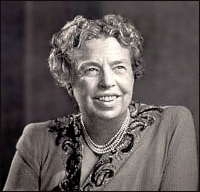
The post Empowering Women appeared first on In the mouth of the serpent.
May 22, 2018
Factual Error in The New Yorker: Is this how fake news starts?
Factual error in the New Yorker: I write this post not just for myself, but for all women whose ideas were misattributed to a man, and who were told to leave it be and not to rock the boat.
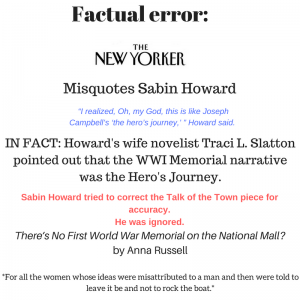
My husband Sabin Howard is making a national memorial, the National World War I Memorial.
He began with drawings. He drafted several iterations of a relief that would tell the story of the Great War.
One morning over breakfast, he was talking about the design and showing it to me.
“My goodness,” I said. “You’ve got Joseph Campbell’s Hero’s Journey there.”
Sabin said, “Explain that?”
So I did. As a novelist, I’ve worked with Campbell’s ideas for years. For the purposes of storytelling, the beats of the hero’s journey are useful and important. I’ve been so entranced by Campbell’s work that I’ve talked about getting a PhD in it.
And so, with my explanation over coffee and scrambled eggs, began a critical and oft-repeated piece of the story around the WWI Memorial. The Hero’s Journey connection has been publicly broadcast, by Sabin and by others associated with the Memorial, including PR people.
This is my contribution to this worthy endeavor and I’m proud of it.
Sabin is an honorable man. He consistently credits me with telling him about Joseph Campbell. He says, “My wife told me about the Hero’s Journey…” in every public venue where he’s spoken–including at a meeting of the Commission on Fine Arts in Washington DC.
In the worlds of literature and academia, claiming credit for someone else’s work is called plagiarism. Sabin is well aware of that. He is extraordinarily brilliant, but I was the one who came up with the Hero’s Journey.
The idea is to give credit where credit is due. As a matter of integrity–don’t take credit for other people’s work. Sabin doesn’t. He’s honorable.
Then came a big opportunity: The New Yorker magazine decided to do a Talk of the Town piece on Sabin and his sculpture at the New York Academy of Art.
The publicist for the NYAA was happy and excited. She had done a great job! This piece would add luster to the NYAA, to Sabin, who was showing the WWI Memorial Maquette at the NYAA, and to the Memorial itself. This was a coup!
Sabin was happy. Despite the extraordinary–unparalleled–quality of his work, he has struggled for acceptance here in the New York art world.
“A prophet is not recognized in his home town,” I tell him.
The Talk of the Town piece went live online yesterday.
It contained a factual error:
“I realized, Oh, my God, this is like Joseph Campbell’s ‘the hero’s journey,’ ” Howard said. “It’s a very simple story that everybody in every single culture has experienced.”
Sabin was out when I texted him about the error. He stepped away from a meeting to contact the publicist at the NYAA and ask for the article to be corrected for factual accuracy.
Here’s where the story gets interesting.
The NYAA publicist was less than enthusiastic about the update. She forwarded the request to the writer at The New Yorker.
Then she emailed back, “Anna…consulted with the fact-checking department on the request, and they feel since the piece doesn’t go into “how” the realization was made, it should stay as is.”
This is disingenuous. Sabin was directly misquoted and asked for his words to be represented correctly. He always says, “My wife said, “This is Joseph Campbell’s hero’s journey.”
The New Yorker‘s misquote creates a factual error in the piece.
Sabin and I continued to push for accuracy. Sabin felt it was an injustice that his words were manipulated and that he was misquoted.
The NYAA publicist responded with increasing unpleasantness. She even told Sabin, “The story wasn’t pitched to The New Yorker as a piece about you and Traci.”
I emailed her,
Adding the words, “My wife remarked…” certainly does not make it a story about me and Sabin. Three words could not do that in a piece of this length. It does, however, become factually correct. It gives the piece an integrity that it currently lacks. Whether or not the magazine is attempting to be vindictive, they are acting in a way that has become a sore point with the parties involved. The magazine has been informed of a misquote and has chosen, this far, not to correct the piece.
The publicist was so appalled that I would continue to stand up for myself and my ideas that she got the head of the New York Academy of Art to email Sabin to tell me to back down.
Is that how the NYAA chooses to behave: by attempting to bully women who are standing up for their contributions? By attempting to get an authority to squelch the quest for accuracy and integrity? Women applying to the New York Academy of Art: BEWARE!
Regarding The New Yorker, here are my questions:
Is this how fake news starts: with journalists twisting subjects’ words any way that pleases them, and being unwilling to correct their piece when told about the error?
If The New Yorker makes a mistake and doesn’t correct that error because of specious and disingenuous reasoning, how is this publication any different from the fake news outlets they descry?
It’s disappointing that a venue that lauds its own integrity isn’t showing its integrity.
And there’s one more wrinkle in this sordid story. That is, there’s a concern about vindictiveness. The NYAA publicist and the head of the NYAA wanted us to stand down for fear that we would alienate people who had “been on our side.”
The NYAA publicist wrote us,
No press will be inclined to write on Sabin again, because it appears that he goes and attacks press who cover him. In addition, “fake news” is very inflammatory language to use and the New Yorker takes accusations like that extremely seriously – they have to, because of their political journalism. Claiming that the New Yorker is publishing fake news will attract a lot of unpleasant attention to you.
It’s a craven concern, but a real one. In today’s world, with its emphasis on expedience, the press might just step away from a subject who insists that his words be accurately represented.
Sabin said to me, “The New York Academy of Art will never work with me again because of this.” In order to uphold his personal integrity, he himself has to make a personal sacrifice that directly affects his career.
And so…I write this blog post for myself, for all women whose ideas have been misattributed to a man and were told to leave it be and not to rock the boat, and–come to think about it–for all the wives who are the unsung heroes supporting their husband.


The post Factual Error in The New Yorker: Is this how fake news starts? appeared first on In the mouth of the serpent.
April 19, 2018
My friend’s grandson passed
Today was the memorial service for a dear friend’s infant grandson.
There were photographs placed around the room in the funeral home. It was a room for congregating, with neat rows of chairs for the visitors and tissue boxes placed at strategic intervals.
Mourning is excruciating anyway, but yoked to a child’s death, it is insupportable. There are no words.
This friend of mine has been in my life for nearly 20 years. He was my advocate and counsel, and slowly, over time and mutual respect, he became a friend. Then a dear friend, someone with whom I can always share a joke. He and his wife have gone to dinners with me and Sabin; they’ve come to visit us at various summer rentals, and we’ve been to visit them.
He’s a good man. He loves his children. I can’t imagine what was harder for him, watching his daughter grieve her tiny son, or his own grief about his grandson.
It’s not my first experience with the loss of a child. My sweet nephew died 25 years ago. He simply died one day. It was years before his pediatrician figured out that he’d had a rare genetic problem. I respect that my sister continued on after his passing. I just don’t know how she did it.
I sat in the memorial service and thought, This is the essential stuff of human life. This is it–stripped bared, down to the marrow in the bones–what life is about: loss, love, family. Togetherness. Having each other’s back when the worst happens, the unimaginable strikes. The solace of community.
It’s easy for people to get lost in a fantasy about life. It’s easy to get stuck in the quick and shallow pleasures. Especially in our culture, where there’s a cultural ideal of a beer commercial life, all frolicking in the sunshine with the hip gang. It’s a glib and seductive path.
It’s also all too easy to allow mundane problems to take over so that this moment now isn’t enjoyed and lived fully–with the juice squeezed out over your hands.
This moment now is never going to be perfect. But it can be savored–for those who are alive. I pray that I will always be alive until it’s my turn to pass.
“Remember that my son lived,” said my friend’s daughter. It came from her heart and pierced mine.
I had sent gifts but hadn’t yet met him. Still, I will remember that little guy.
The post My friend’s grandson passed appeared first on In the mouth of the serpent.
March 11, 2018
Tender Loving Care for a Marriage
Tender Loving Care for a Marriage
Sabin and I came to a dark and stormy place in our marriage.
That diction belies the fresh and cutting pain of such a place and time.
When we both returned to the marriage, we sought help in putting things back together. There are books, websites, and videos that have helped us, and that continue to do so. I write this blog for people like us who are working to strengthen their marriage.
It’s a deeply heartfelt journey to restore a marriage to love and harmony.
One resource for us is Dr. Dana Fillmore’s Strong Marriage Now site, www.strongmarriagenow.com. Her videos and blog posts tell it like it is, spell out effective strategies for working through marital issues, and offer hope to a bewildered spouse floundering with the despair of a marriage on the rocks. There’s not a moment of fluff. She talks about personal responsibility and strategies for effective communication. Of particular note are the videos on “How to Get Your Partner Checked Back In,” “Get Over Past Pain – Forgive,” and “7 Steps to an Effective Apology.” I also liked her “Surviving an Affair” series.
Dr. Fillmore emphasizes time spent together in her valuable “StrongMarriageNow System.” At least 8 hours per week, she insists. Eight hours per week, every week. I think back over the past few years with Sabin and I realize, if he and I had been spending 8 hours a week together, we never would have come to the treacherous shoals of near divorce. Her “StrongMarriageNow System” is important. It’s worth the investment of time and money for anyone who cares about their marriage. Buy it now.
Note: I’m not an affiliate! I used her program and found it helpful. Her program became a springboard for me to explore the wealth of published wisdom on strengthening a marriage.
Somewhere in Dr. Fillmore’s website or blog, she recommended “The 5 Languages of Love,” and I bought this book by Gary Chapman. Sabin and I both took the quiz, and we discovered that his primary love language is Physical Touch, and mine is Quality Time. Neither of us had our love language spoken to us when we were separated by vast distances. It was a recipe for disaster.
I liked this book “The 5 Languages of Love: The Secret to Love that Lasts” and I recommend it for couples. It’s worth exploring how you and your mate each feel and receive love.
Isn’t that ultimately the point of the sacred union of marriage? To share joy and communion and to make each other feel safe and profoundly connected to each other? To be the one person who is the bulwark against the vagaries of fate, the one person who’s always there for your mate.
Googling online one morning over my coffee–coconut sugar and heavy whipping cream, please–I discovered a YouTube Video of Dr. John Gottman speaking. He was giving a lecture at a Rotary Club on “Making Relationships Work.”
I was electrified!
Dr. Gottman is an MIT-trained researcher with more than four decades of experience in carefully studying marriages, what makes them work and how they fail. His “4 Horseman of the Apocalypse“: Criticism, Contempt, Defensiveness, and Stonewalling shocked me with their truthfulness. I saw immediately that Sabin stonewalls, and that I, yes, alas, I am critical.
It was evident that I needed to work on myself so I wasn’t critical.
In a general way, our pattern is mirrored by men and women at large. Dr. Gottman says that 85% of stonewallers in a heterosexual marriage are men.
Defensiveness is when we don’t take responsibility for our part, or any part, of the problem.
Worst of all is contempt. “Contempt is sulfuric acid for love,” says Dr. Gottman, and it actually erodes the immune system.
It hit me like a lightning bolt across the steppes to have these 4 toxic styles of relating articulated so clearly. I don’t enjoy having my failings pointed out to me, but I want my marriage to work. I don’t want to be a critical wife. I want to be a loving and respectful wife. Not a doormat–a loving and respectful wife. In fact, I intend to be a loving and respectful person.
Dr. Gottman also discusses what makes a marriage work, the strategies employed by “the Masters” who have happy, successful marriages. He talks about creating an atmosphere of fondness and admiration; about turning towards each other, especially when one spouse makes a bid for connection; about exploring each other’s love maps; and about accepting influence from each other. Especially, he notes, a husband accepting influence from his wife will strengthen the marriage.
I watched all the Dr. Gottman videos I could find, and then I bought some of his books. “The Seven Principles for Making a Marriage Work” is wonderful. The sections on ‘Solving solvable conflicts’ and ‘Coping with conflicts you can’t resolve’ are useful in the loveliest ways. Every marriage endures conflict, even the happiest marriage. What matters is how conflict is handled.
It’s no easy thing to rectify and restore a marriage. It’s no easy thing to keep a marriage strong. Besides the internal relating styles that can complicate matters, there are external forces working to dissolve a marrige.
There are predatory women who want to scoop up other women’s husbands; there are low class women who come for a job interview and drop their knickers. There are selfish men who, if they want her, don’t care whether or not a woman is married or if there is a child involved. These sorts will manipulate to achieve their own ends. Their manipulations can be devastating for a marriage.
There are other negative outside influences that can derail a marriage. There are nasty in-laws. There are so-called “friends” who want to break up the marriage for their own spiteful or self-interested purposes. In my opinion, those types should be avoided as soon as they’re identified.
It’s easy enough to get married but hard to stay married. It’s the hardest thing we do, perhaps. It requires constant self-monitoring and constant accommodation and regular sacrifice.
Marriage requires sacrifice because it is sacred. Sanctity requires hard work and sacrifice. It’s the most poignant endeavor of all. It’s the hardest road to walk–and the most important, the most human.
To anyone out there who reads this blog post hoping for help for their painfully unsettled marriage: Welcome, and God Speed. I pray that these suggestions help you. I offer you my blessing.
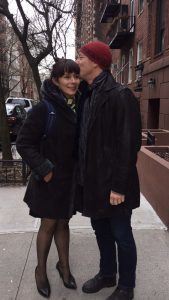
The post Tender Loving Care for a Marriage appeared first on In the mouth of the serpent.
March 1, 2018
Returning to Source and Writing Again
Write again, they are telling me. You must write, Traci.
It’s the new theme: writing again.
The past twelve months have been excruciating. I am struggling.
It’s been a year of comings and goings from my life; intermittency like a suddenly thrown grenade blew up my peace of mind. It has been a year of travel, loss, loneliness, bad advice, uncertainty, sadness, emptiness, tough choices, betrayal, humiliation.
It has also been a year of joy: the birth of my beautiful grandson, deepening friendships, richer closeness with my sweet middle daughter. A lot of yoga! Books newly cherished. A beautiful place that has come into my consciousness as a home.
Change is afoot.
Write again, my husband says, as if that will erase everything that has passed between us. His eyes are soft and his voice is loving as he counsels me. Write again. He holds me often throughout the day.
His hands on my shoulders, my arms, my breasts, my belly help me. He is kind. And I am still struggling.
In every moment brims the fullness of the spiritual imperative: We are here to love, to learn, to work, and to play. We are here to choose love over fear.
Why then this heart ache?
For what reason did I come here? I’ve asked myself a thousand times over the last span of time.
What is the imperative that I am mindful of it?
How have I betrayed myself?
I suspect it’s the effort to answer these questions that will heal me. It’s the journey itself that will return me to Source–whatever the destination may be.



The post Returning to Source and Writing Again appeared first on In the mouth of the serpent.
February 9, 2018
Snooty Rich Women Are Everywhere, Including New Zealand
Snooty rich women are everywhere, including New Zealand
Places change but people don’t.
A recent trip to Wellington showed me the commonality of human traits, especially foibles. In a land where people pride themselves on being non-materialistic and friendly, I got to experience the same self-aggrandizing arrogance that I see in New York city.
Here in the Big Apple, my daughter attends an excellent school. Many of the students are the privileged scions of Masters of the Universe. Now, most of the kids are lovely people, and most of the parents are lovely and congenial. There are many kind, decent people who happen to be wealthy. Even enormously so.
And then there are the moms who’ve known me for the eight years since our children were in kindergarten together–and they still look at me every time they see me as if they’ve never met me before.
What makes them so special? It mystifies me.
An experience last fall illustrated this point. My daughter was doing a project with another girl at the girl’s house. I went to pick up my daughter. I stood in the entry foyer of the 20,000 square foot, marble-floored Park Avenue apartment, waiting. It became clear that the girls were finishing slowly. Reluctantly, the mom invited me in. She spent the next half-hour talking exclusively about herself. She didn’t pause in her self-recitation to ask one single question about me.
I walked out laughing, because, really, such enormous self-absorption is funny.
Cut to Wellington, New Zealand, where my husband worked for six months. Our daughter spent a month with him, attending school there. It was a great adventure for her to see how Kiwis live and to immerse herself in another culture for a month.
But people are people in all cultures.
My husband’s landlady had hosted my daughter every day for the month of August when she was there; she would climb 20 yards up the hill to their house and play with their daughter. The landlady and her husband, an enormously successful entrepreneur, hosted my husband for dinner twenty times. But when I arrived, they pretended I didn’t exist.
It is true that they, along with several other people in Wellington, were trying to break up our marriage. I overheard the husband on speakerphone dissing our marriage before we returned to New Zealand together for my husband to finish his work.
I spent some weeks with my husband in Wellington. No word from the rich folks up the hill who had been so inclusive to my daughter and my husband.
The last week, I bought a pastry and climbed the hill and introduced myself to the rich lady. I gave her the pastry and said, “I’d like to thank you for your kindness to my daughter and my husband.”
She spent the next fifteen minutes talking about herself.
I took my leave and climbed back down to the house my husband had rented, thinking I had found a snooty Park Avenue lady in Wellington, NZ.
I felt badly for my husband, because he had actually considered these people friends. Their treatment of me, his wife, proved that they weren’t. In the eyes of God and the law, he and I are one person. How people treat me is how they are treating him. He had a day of heart-ache about it. Then he let go of those snooty folks.
It is hurtful when people treat me badly. I feel pain and sadness when people are nasty to me.
Because of the 9000 mile separation, and because of other issues before he left to do the project, my husband and I had reached a dark place in our marriage. He had vocalized his upset to people in Wellington. In the short time he was there, he had reached out to many people and built a community for himself.
It was clear to me that his real friends were the people who welcomed me. The people who truly cared about him were the ones who said, “Fix your marriage. You’ve been nearly 20 years with your wife. You have a child with her.” These are the people who were able to take a nuanced view of what he said, the people mature enough to understand that there are two sides to every story. Those were the people who value marriage and who understand that a long marriage goes through long cycles, and that the imperative is to return to the marriage and to work at it until you fall back in love with your spouse.
It would have been wonderful–and I think correct–if the wealthy people up the hill had invited me for a drink within a few days of my arrival. It would have been kind and humane.
Of course, I know that how people treat me is a reflection of them, not of me. Their behavior reveals them. It’s not about me at all.
But I still felt hurt to be treated so shabbily. Wellington, New Zealand, left my heart with some scars that won’t heal quickly.
For the image for this blog piece, I have selected an image of myself. This was taken in Paris last year. A writing partner whom I love took this photo. It goes along with this post because in the picture, I am vulnerable.
The post Snooty Rich Women Are Everywhere, Including New Zealand appeared first on In the mouth of the serpent.
January 4, 2018
On Love
On Love
Of late, I think about love. The nature and meaning of love, the kinds of love.
References to love abound in our culture. Mostly those references concern romantic love. If you play American music, you will hear all manner of songs about romance, its thrills and heartaches. Other shades of love, like agape love, are mostly ignored.
Certainly, the dizzying rush of falling for someone is a kind of love. Taking a lover to bed and opening…opening…opening to the passion of merging is a kind of love. The great poet Rumi uses that merging to lift readers into an exaltation of love, the profound love of the omnipresent Beloved.
But there are other kinds of love and it is those less heralded varieties that are rolling around my thoughts. For example, love is forgiveness. In this world where we are all imperfect beings doing the best we can, forgiveness is essential. We are all going to hurt each other. Your family members will badmouth you or fail to support you or steal your inheritance, your friends will lie to you, your spouse will threaten to divorce you or, devastatingly, will stray.
Forgiveness is love in action. It’s love that says, “I may never again put myself in the position to be hurt this way by you, but I release myself from re-experiencing this pain over and over again, and I release you to your own karma, which is between you and God.”
Forgiveness permits—encourages—the one who made the mistake to recover their dignity and self esteem. Forgiveness is understanding that we are all prone to err. As painful as it can be, forgiveness is a blessing for both the forgiver and the forgiven.
Another kind of love is allowing someone to project their shadow onto you. Parents and therapists know this kind of love all too well. Sometimes, in the process of integrating themselves, a child or client is scorched by his or her own dark side. That person needs to disown it and project it outward onto someone else. It’s a pure and great form of love to hold that until the person can own it for herself and heal.
Life is a great journey. A friend of mine told me that the basis of love is respect and kindness. At the time, I agreed, though I thought to myself that it was a tepid basis for something so vast and protean. Now I realize, respect and kindness are the basis for friendship, and friendship is an integral component of every love relationship. But those aren’t necessarily love.
Rather, love is giving everything when called. It’s saying, “Yes, I’ll be there for you as you need me, no matter what the cost is to me. So if you need me to sell my house and take up residence across the street from you to catch you when you fall, I’ll be there.” Following through on that promise: that’s love.
Love is that you’d lie down in a street and let a truck run over you if that saves your kid. And you feel grateful for the opportunity. That’s love.
Love doesn’t wait to be given to first; it doesn’t negotiate; it doesn’t play tit-for-tat. Sure, yes, relationships between flawed human beings require constant negotiating. But love isn’t negotiable the way people aren’t fungible.
Love’s accounting is about giving and offering and surrendering. It’s about giving everything, everything, with hope but without expectation, and allowing the chips to fall where they may—because we humans can’t control everything. All we can do is love and allow.

The post On Love appeared first on In the mouth of the serpent.
December 26, 2017
Marriage and Family are Real: Marriage and Family are Love
Marriage and Family are Real: Marriage and Family are Love
(reprise of a Facebook Post I wrote)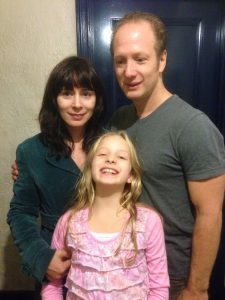
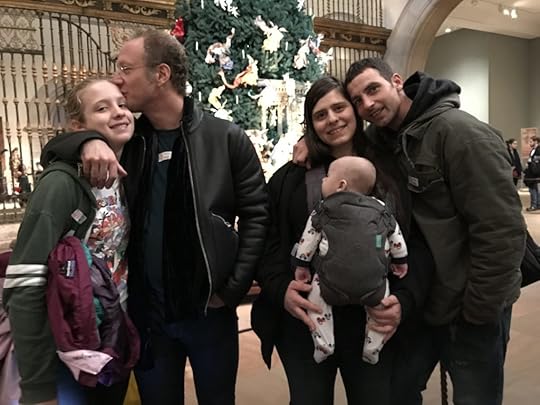
This is our family. We’ve gone to see the Tree at the Met for nearly 2 decades.
It’s love. Family is love, and it is everything. Family is real.
Family radiates from a marriage. Marriage is love, and it is everything. Marriage is real. Imperfect, unglamorous, full of laughter and tears: real.
Sabin and I have been married for 13 years, together for almost 18. We’ve stood beside each other, holding hands and enjoying holiday uplift, for nearly 2 decades.
Marriages are built on such things: trips to the Met and to Italy and to the pediatrician and to the kitchen to cook breakfast; shared jokes and shared Figurative Sculpture books and shared victories and shared burdens and, yes, shared challenges. Every life encounters conflict and obstacle, ache and loss. These are real, too. And they are so much easier to bear with your family, your mate, holding your hand–as Sabin and I have held hands for nearly two decades.
We’ve held hands through lean times and good times, through sickness and health, through the birth of our daughter, when I died twice and was narrowly revived by a doctor who had “never seen so much blood in her life.” We held hands and held each other in a spacious room in Venice while the rain pattered on the canal during our 10th anniversary.
Even though this year, 2017, has been so hard, forcing a lengthy and devastating separation, I affirm our marriage. Marriage is 1000 tiny threads that bind people together, and those threads are shared experiences. I affirm our threads. I affirm our marriage. Sabin Howard, I love you.


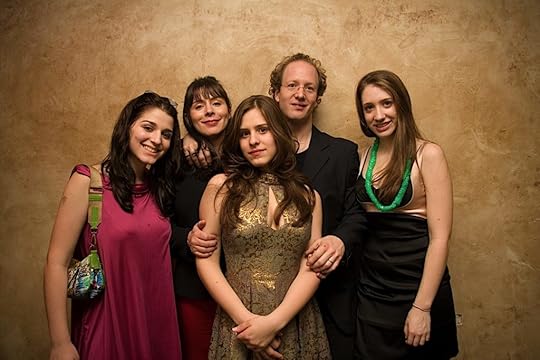
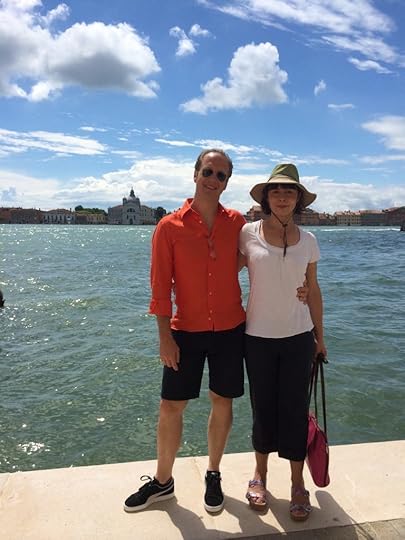
The post Marriage and Family are Real: Marriage and Family are Love appeared first on In the mouth of the serpent.
November 24, 2017
Great New Video for THE YEAR OF LOVING
There’s a great new video for THE YEAR OF LOVING.
Book trailers are a thing. They’re supposed to tease and intrigue the viewer, so the viewer wants to buy the book. They should also entertain and perhaps explain a little bit.
I made this one, and I had a lot of fun. I hope you enjoy it.
Art gallerist Sarah Paige’s world is crumbling. One daughter barely speaks to her and the other is off the rails. Sarah is struggling to keep her gallery afloat in a tough market when she learns that her most beloved friend has cancer. In the midst of her second divorce, two men come into her life: an older man who offers companionship and stability and an exciting younger man whose life is as chaotic as hers.
Sarah’s courage, humor, and spirit strengthen her, but how much can she bear, and what sustains her when all else falls away?
Reviews
“…A lively, fun romp through life that carries readers through the options and choices of a heady year in which everything changes and Sarah learns how to live the life she chooses not just in response to, but in spite of, the swirl of relationships around her. Women will find it the perfect leisure or beach read.” – Donovan’s Bookshelf
“The Year of Loving is a wonderful read for those who adore romance, intelligent women’s fiction, and steamy scenes. And as always, Slatton manages to turn any story into a literary piece…” – The Portsmouth Review
The post Great New Video for THE YEAR OF LOVING appeared first on In the mouth of the serpent.
November 2, 2017
From HuffPo: Review of ADDicted, A Sensitive Film About Adderall Abuse
This is my review of ADDicted, first posted on the Huffington Post.
In the way that synchronicity happens, I received an email about the film ADDicted one week after my middle daughter and I had discussed “performance enhancing drugs.”
My beautiful daughter, who is now a straight A student at college, was diagnosed with a Learning Disorder Not Otherwise Specified (LDNOS) in 8th grade. Her grades had dropped precipitously; her behavior was execrable. She was eventually diagnosed with ADHD and prescribed Ritalin.
It was a long, twisty, agonizing road before my daughter’s journey led her to double-majoring at a well-regarded university. I’m fascinated with her study choices, which are highly intellectual. I’m proud of the responsible, mature young woman she’s become. But we had some moments of despair and heartache along the way.
I wondered what she thought of the medications she had been prescribed as a teen. She doesn’t take them now.
“So many college kids go around asking for Adderall,” she said. “I’m so glad I developed strategies for studying that don’t depend on performance enhancing drugs.”
She commented on the prevalence of Adderall use at college. “Kids who are not ADD take them to get through exams and papers,” she stated, in a matter-of-fact tone, as if everyone knew about Adderall use. She went on to tell me that part of the problem, for her, had been that she wasn’t interested in the classes she was assigned in high school. “Now I love my courses. I love what I’m studying.”
It made me smile. I’m not sure Latin is everyone’s cup of tea. I’m pretty sure she would have thrown a Latin book at me in 9th grade if I’d tried to get her to take it then. But now she’s acing it. She came to it authentically, through her own choices.
The pitch for the movie arrived in my inbox and I was intrigued because of our recent conversation.
The movie ADDicted, written and directed by , dramatizes what my daughter had told me: college kids who aren’t diagnosed with ADD/ADHD try to score the drug in order to cope with the overwhelming stresses of exams, papers, and extracurricular obligations.

The protagonist is a young man negotiating personal and academic stressors. Drew is likable, relatable, engaging. He’s barely hanging on in the face of an overly full life and the demands of classwork, football, his girlfriend, and his ambitious and widowed mother.
A tough but fair-minded professor fails Drew’s paper on the basis of plagiarism, that most heinous of academic crimes. Drew pleads for a second chance and is granted one. Unfortunately, he entrusts this crucial paper to the girlfriend with whom he recently broke up. She’s desperate to win him back after betraying him. She snags some Adderall from him to get her through his paper and three others, though she is not diagnosed with ADD/ADHD. Even with the enhancement, she fails to give him the paper on time. Drew is suspended and barred from playing football.
Drew faces his team and admits to his mistakes. His speech is a fine moment of taking ownership. There’s not a whiff of self-pity in this character, just an acknowledgment that he’d made poor choices and now the whole team must suffer the consequences. It’s a poignant moment that makes Drew even more sympathetic.
Drew’s ex-girlfriend isn’t the only person hitting him up for “Addies.” A teammate on the path to pro football begs some off him, as well. Drew the good and empathic friend, wanting his buddy to succeed, obliges.
Drew’s teammate fares well but the former girlfriend ultimately pays a steep price for using Adderall without a prescription. Note that the girlfriend did not suffer from ADD/ADHD, nor was there a doctor overseeing her use of Adderall. She prescribed herself by way of a stolen bottle.
Some viewers might take from this film a cautionary tale that warns against the use of ADD/ADHD medication altogether. However, that’s not the point of this sensitive, well-constructed story.
The point is that abuse of Adderall is common. It’s also dangerous. People who aren’t diagnosed with ADD/ADHD and who aren’t under the care of a physician should beware. These drugs are addictive, they have strong side effects, and they are very, very dangerous.
In the way it goes when you’ve raised a bunch of children in a city, I know kids who have been diagnosed with ADD/ADHD, who are under the care of a physician, and who greatly benefit from Adderall and Ritalin. These drugs can truly help people who struggle with ADD/ADHD. Not every person with a learning disorder can do as my daughter has done and develop non-pharmaceutical strategies for succeeding at academic work.
In the end, Drew’s way out of his predicaments mirrored my daughter’s way out. He had to still himself, to turn within and to listen to his heart. Once he did that, he started making good choices.
I sent a draft of this piece to Dan Jenski, asking if he had any comments. He sent back a quote and it’s perspicacious enough that I’ll give it pride of place, punctuating my review of ADDicted at the end.
“I was almost put on Ritalin as a kid and was able to find my true calling without taking pills. If every child received a customized education where he/she got to choose their own path, at a point earlier than college, based on their individual wants and desires, there wouldn’t be an ADD/ADHD epidemic or the need for Adderall. These disorders exist because less and less people are fitting into an archaic, underfunded, one-size-fits-all education system. We need to let children lead the way with their education.”
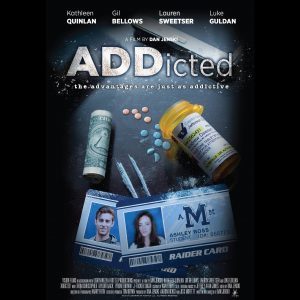
The post From HuffPo: Review of ADDicted, A Sensitive Film About Adderall Abuse appeared first on In the mouth of the serpent.




